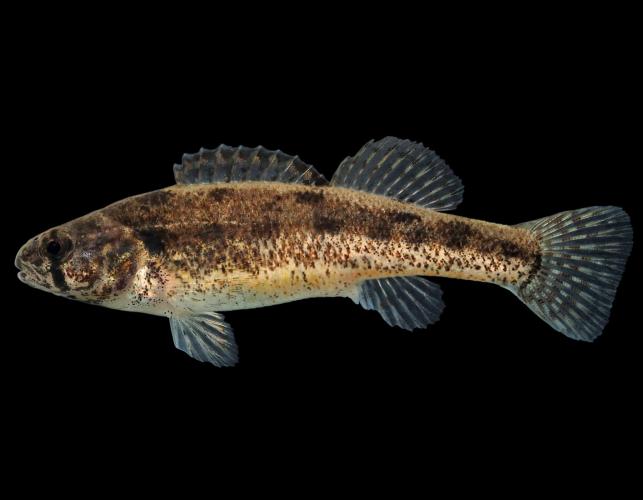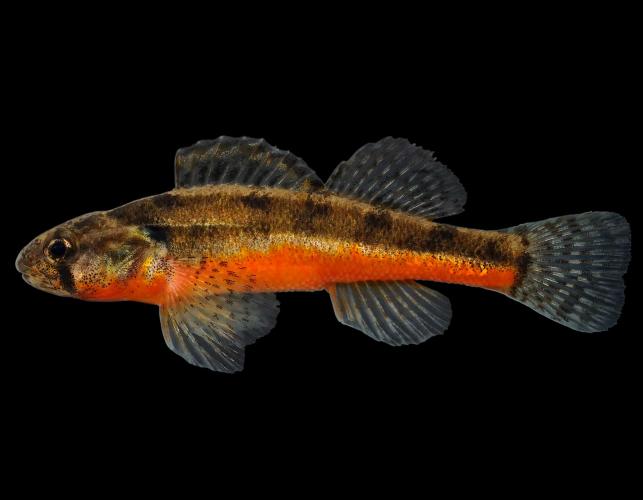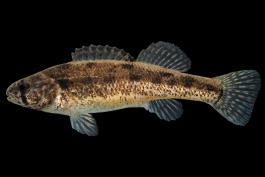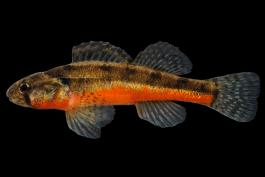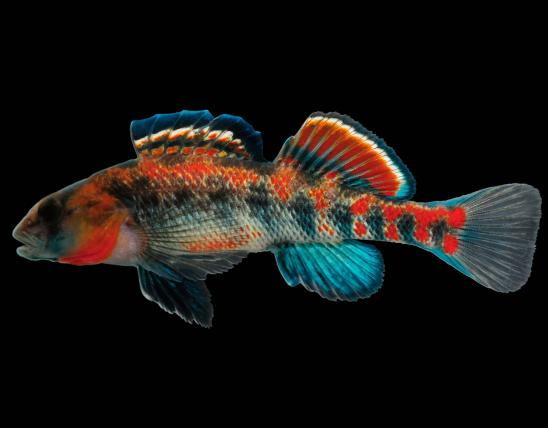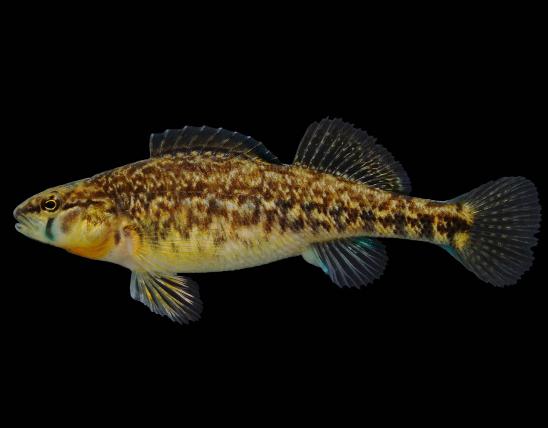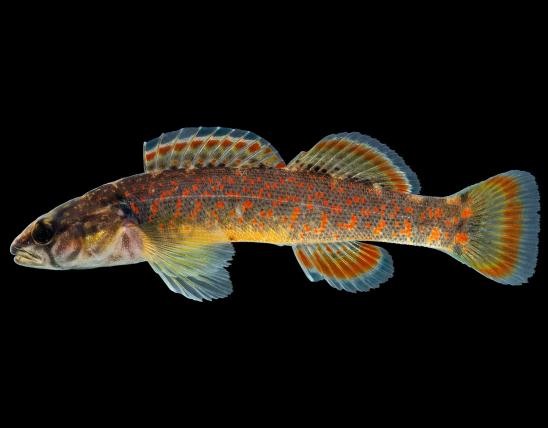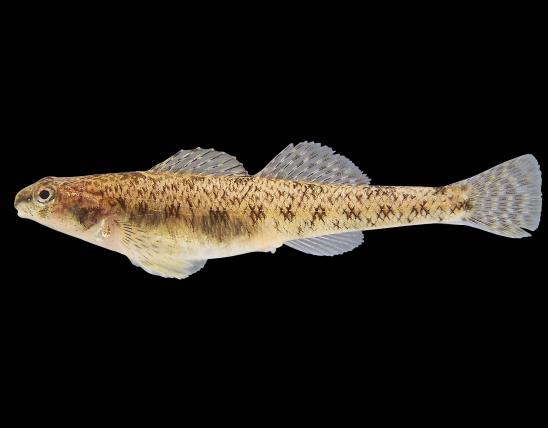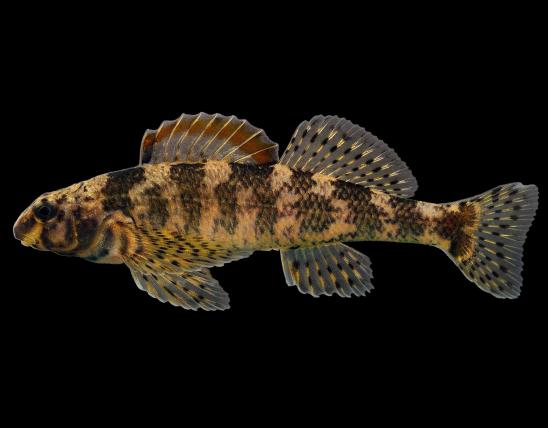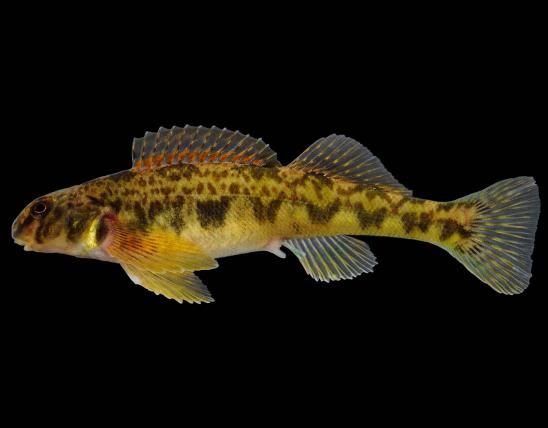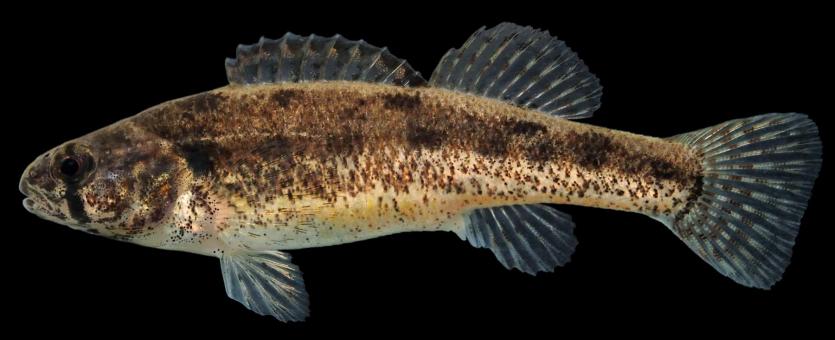
The Arkansas darter has a short, blunt snout with a barely noticeable mouth. Opercles (bony covering protecting the gills) and preopercles (foremost opercular bone) are scaleless. The spiny dorsal fin has 9 or 10 spines and the soft dorsal fin has 11 to 13 rays. The tail fin has two spines.
The back is colored with six to eight indistinct dark cross-bars. Head and body are thickly sprinkled with fine black specks. A narrow dark vertical bar is visible beneath the eye.
Breeding males show bright orange color along the belly surface and the gills. Females are dark tan with brown-black on the back. Both sexes have 12 to 14 dark bars along the midside, a dark wedge-shaped spot below the eye and the underside is covered with very tiny dark spots.
Total length: 1 1/2 to 2 1/4 (max. 2 1/2 inches).
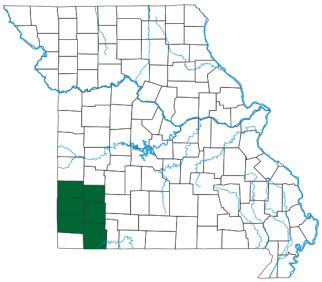
In Missouri, the Arkansas darter is known to occur only in the Spring River system of the southwestern Ozarks.
Habitat and Conservation
Shallow spring branches and spring-fed creeks with sandy bottoms and mats of watercress in southwestern Missouri. Because of its specialized habitat, this darter is spotty in distribution but is often quite common where it does occur.
Food
A variety of aquatic insects and some plant material, including small seeds. Mayflies are the main source of food.
Status
Rare in Missouri and a candidate for federal listing by the U.S. Fish and Wildlife Service. Localized populations occur in the Arkansas drainage in eastern Colorado, southern Kansas, northeastern and north-central Oklahoma, southwestern Missouri and northwestern Arkansas. The species is uncommon across its range.
Life Cycle
Darters are sexually mature in one year or less. In Missouri, they spawn mid-February to mid-July in shallow water over a bottom of coarse gravel. Eggs are usually deposited in open areas, on organic material that covers a sandy streambed. The population in Missouri is dominated by individuals less than two years old, with a maximum age of three years.
Control
Human Connections
The Arkansas darter's declines indicates the loss of the habitat types it needs for survival: shallow spring branches and spring-fed creeks with sandy bottoms and mats of watercress.
Ecosystem Connections
Controls populations of aquatic insects, particularly mayflies.
